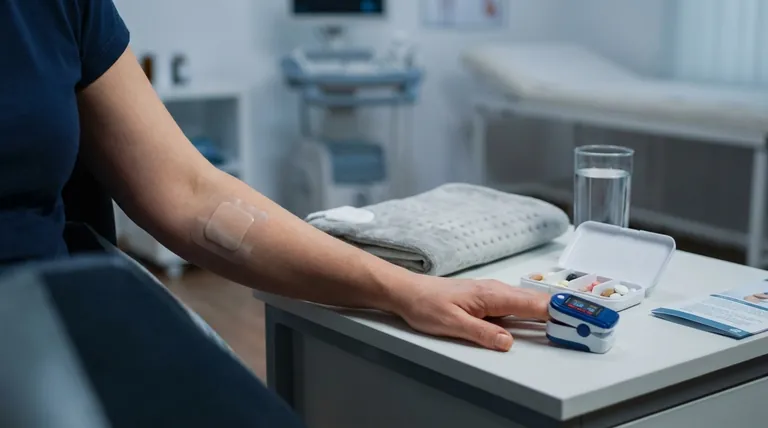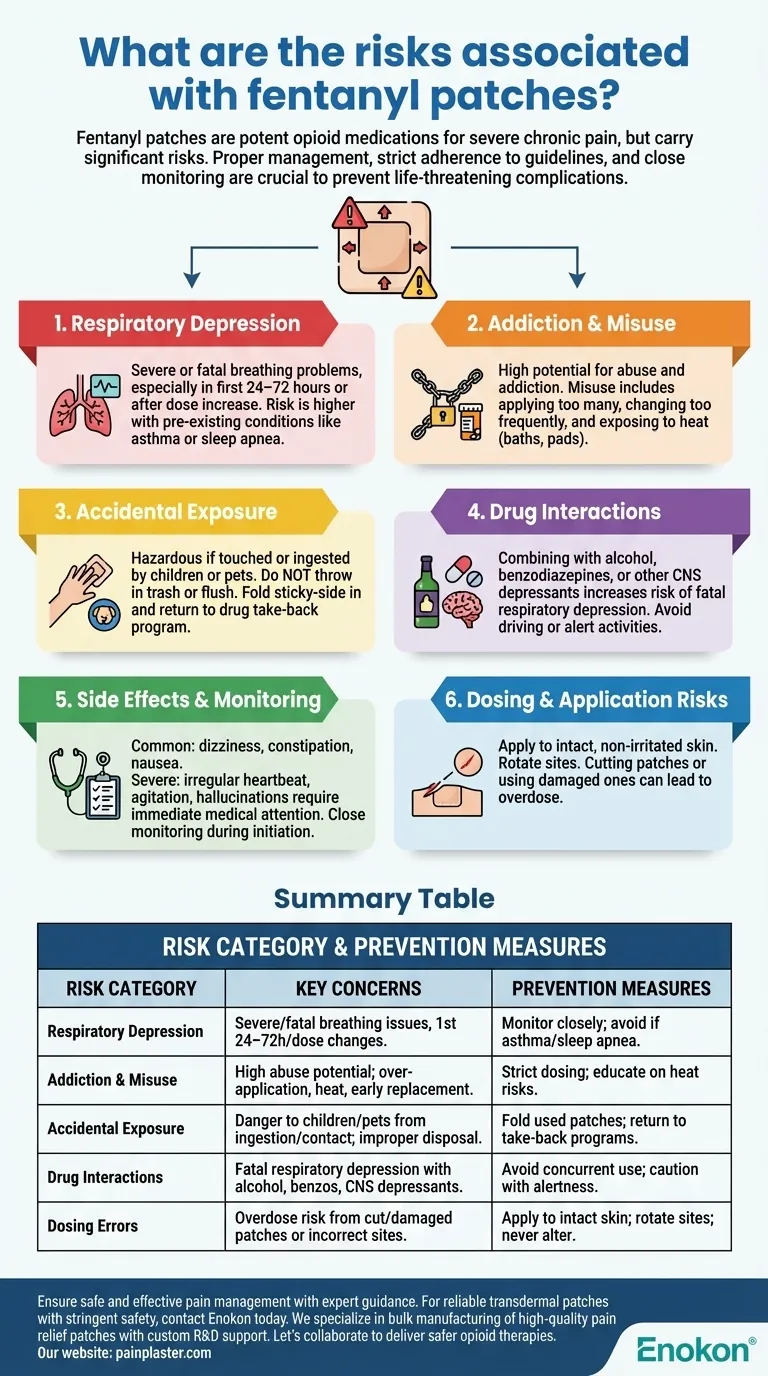Fentanyl patches are a potent opioid medication used for managing severe chronic pain, but they come with significant risks that must be carefully managed. These risks include respiratory depression, addiction potential, accidental exposure, and improper disposal leading to environmental or accidental ingestion hazards. The patches are designed for slow release over 72 hours, but misuse—such as changing them too frequently or exposing them to heat—can lead to dangerous spikes in drug levels. Patients must follow strict guidelines to minimize these risks, including proper storage, disposal, and adherence to dosing schedules. Healthcare providers should monitor patients closely, especially during initiation or dose adjustments, to prevent life-threatening complications.

Key Points Explained:
-
Respiratory Depression
- Fentanyl patches can cause severe or fatal breathing problems, particularly within the first 24–72 hours of use or after a dose increase.
- The drug's lipophilic nature allows it to enter systemic circulation rapidly, increasing the risk of respiratory depression, especially in patients with pre-existing conditions like asthma or sleep apnea.
-
Addiction and Misuse
- Fentanyl Patch has a high potential for abuse and addiction due to its potency.
- Misuse includes:
- Applying more patches than prescribed.
- Changing patches too frequently (e.g., before the 72-hour interval).
- Exposing patches to heat (e.g., hot baths, heating pads), which accelerates drug release.
-
Accidental Exposure
- Used or unused patches can be hazardous if touched or ingested by others, especially children or pets.
- Proper disposal is critical: patches should not be thrown in the trash or flushed. Instead, they should be folded sticky-side in and returned to a drug take-back program.
-
Drug Interactions
- Combining fentanyl with alcohol, benzodiazepines, or other CNS depressants increases the risk of fatal respiratory depression.
- Patients should avoid activities requiring alertness (e.g., driving) until they know how the drug affects them.
-
Side Effects and Monitoring
- Common side effects include dizziness, constipation, nausea, and allergic reactions.
- Severe symptoms (e.g., irregular heartbeat, agitation, hallucinations) require immediate medical attention.
- Healthcare providers must monitor patients closely during treatment initiation and dose adjustments.
-
Dosing and Application Risks
- Patches must be applied to intact, non-irritated skin and rotated to avoid irritation.
- Cutting patches or using damaged ones can lead to uncontrolled drug release, increasing overdose risk.
By understanding these risks and adhering to safety protocols, patients and caregivers can mitigate the dangers associated with fentanyl patches while benefiting from their pain-relieving properties. Always consult a healthcare provider for personalized guidance.
Summary Table:
| Risk Category | Key Concerns | Prevention Measures |
|---|---|---|
| Respiratory Depression | Severe/fatal breathing issues, especially in first 24–72 hours or dose changes. | Monitor patients closely; avoid use in those with asthma/sleep apnea. |
| Addiction & Misuse | High abuse potential; misuse via over-application, heat exposure, or early replacement. | Strict adherence to dosing; educate patients on heat risks. |
| Accidental Exposure | Danger to children/pets from ingestion or contact; improper disposal. | Fold used patches sticky-side in; return to take-back programs. |
| Drug Interactions | Fatal respiratory depression when combined with alcohol, benzos, or CNS depressants. | Avoid concurrent use; caution with activities requiring alertness (e.g., driving). |
| Dosing Errors | Overdose risk from cut/damaged patches or incorrect application sites. | Apply to intact skin; rotate sites; never alter patches. |
Ensure safe and effective pain management with expert guidance.
If you're a healthcare distributor or brand seeking reliable transdermal patches with stringent safety protocols, contact Enokon today. We specialize in bulk manufacturing of high-quality pain relief patches, offering custom R&D support to meet regulatory and patient safety needs. Let’s collaborate to deliver safer opioid therapies.
Visual Guide

Related Products
- Capsaicin Chili Medicated Pain Relief Patches
- Far Infrared Deep Heat Relief Patches Medicated Pain Relief Patches
- Icy Hot Menthol Medicine Pain Relief Patch
- Menthol Gel Pain Relief Patch
- Heating Pain Relief Patches for Menstrual Cramps
People Also Ask
- Can pregnant women use pain relief patches? Your Essential Guide to Safe Pain Management
- Can children use the pain relief patch? A Critical Safety Guide for Parents
- What side effects might occur from using capsaicin patches? Understand the difference between normal sensation and danger signs.
- What is the purpose of capsaicin patches? A Guide to Temporary Pain Relief
- Are natural and herbal pain relief patches effective and safe? Discover the Benefits of Targeted Relief
















